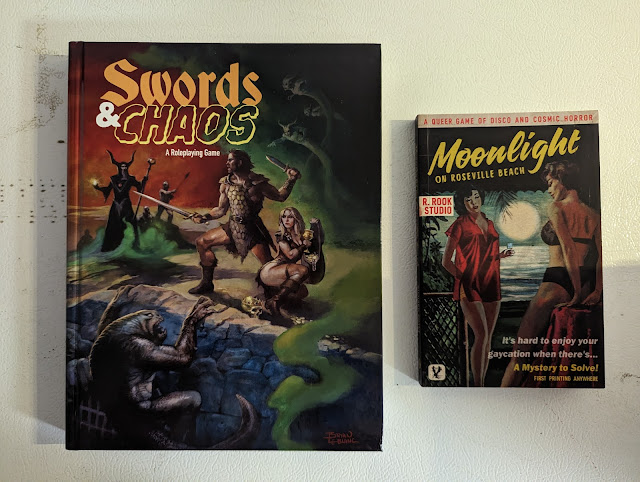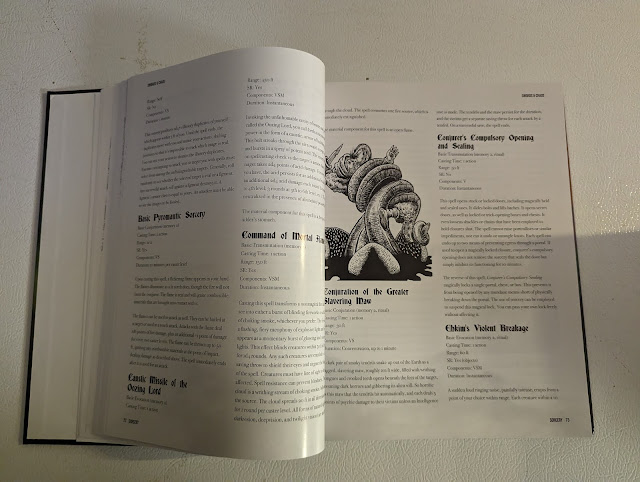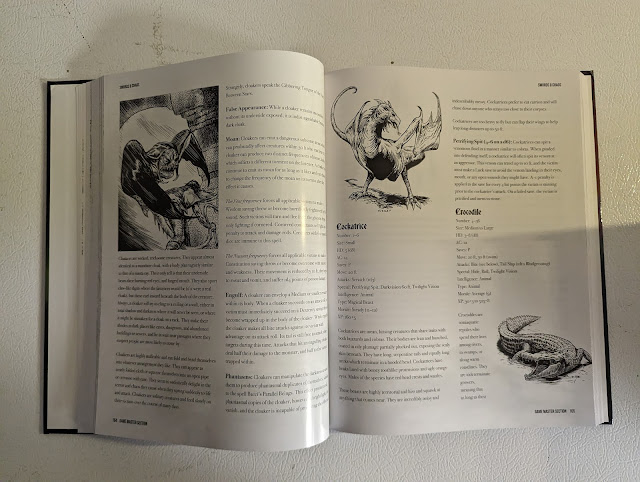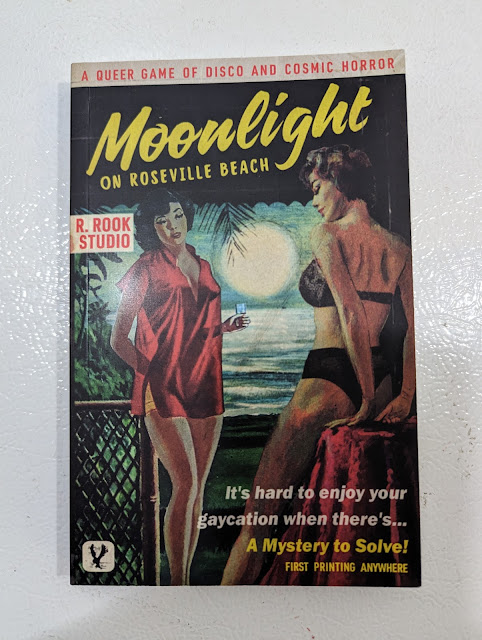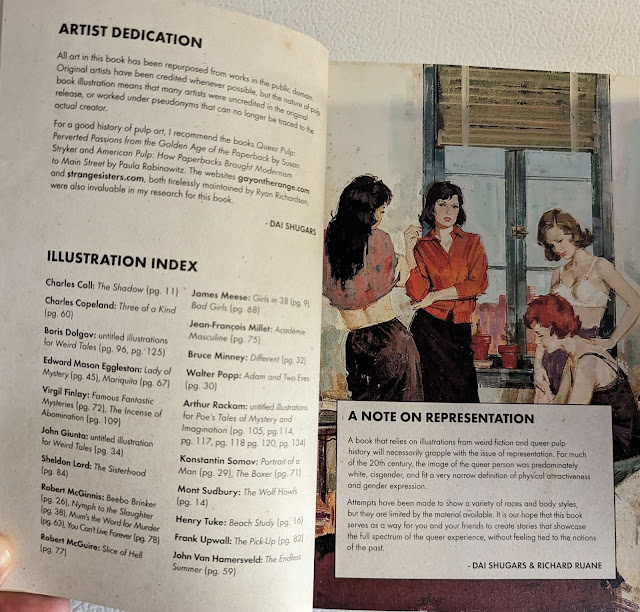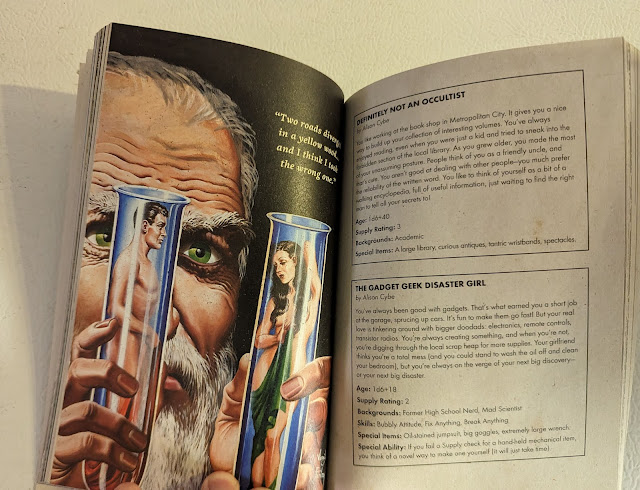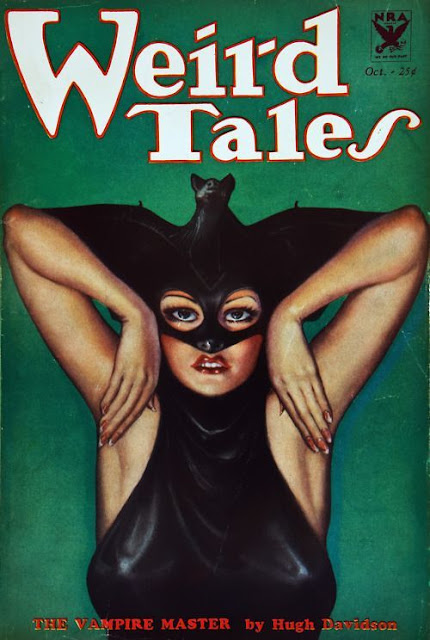Some new reviews from various products I have picked up lately. Mostly horror, but also some others I have used recently. All really fun.
Fear and Faith Horror Rules
A great little miniature skirmish game. The rules are fast, simple and easy to learn on the fly.
Some situations tend to work better than others, such as an attacking zombie horde or a bunch of vampires in a grave yard, but all in all I like it.
I actually plan to try it out in conjunction with other Horror RPGs and see how well they mesh. They game was not designed specifically to do this, but it certainly can be easily adapted to this.
And even to make it perfect there is a list of links of where to get some quality horror minis.
5 out of 5 stars
Dread: The First Book of Pandemonium
Here is my basic problem with Dread: The First Book of Pandemonium.
Why haven't I heard more about it? It is an extremely easy, almost light, game for all sorts of horror. The execution is extremely well thought out and has such an indie charm to it I am a little confused as to why I haven't heard more about it.
Let me go over the book a bit.
The Art and Layout. The art is a mixed batch of photo art, line art and a mix. Instead of looking chaotic it comes together as a whole. It reminds me a bit of the various "investigator notebooks" style layouts that are popular in modern horror games today, only no where near as cluttered. The layout is clean, neat and easy to read. In fact the near "sterileness" only adds to the horror feel to be honest.
Characters. The best part. The characters of Dread are damaged goods. In this respect I am reminded of Kult or other games where the characters start out already in deep trouble. In many ways the characters of Dread are like that of The Matrix. Outside humanity, but fighting for it. It is the extensional fight of WoD or Kult, with the actual fights of Armageddon and the chance of survival of Call of Cthulhu.
Characters do not have a lot of stats. Again this game is light, but there is more than enough here and really the focus of this game is more what you do and not how hard you hit it (though that is pretty important sometimes).
The magic system is likewise as light, but it is not lacking in spells. The guide lines are also pretty simple that making new ones is easy.
Between Magic and Combat is appropriately Exorcisms. I can't recall a game that devoted an entire chapter to this before. Another plus in it's favor.
Combat is also designed to be simple. Interestingly enough you roll to attack and to defend.
A section on role-playing and a quick start round out the first half of the book. The rest is for Directors only.
There are rules sections (not much) but then what follows is a true gem. Page after page of new, completely original demons. Nothing cribbed from the Monster Manual or some moldy document from the Church. Demons, their habits and how to take them down. Honestly worth it for this alone.
The book finishes off with some sample scenarios.
All in all a great game. I can't wait to try it out with a group that would really appreciate it.
Don't get this game if you like a lot of rules or crunch or want to have a number next everything your character can (or can't) do.
Don't get this game if pick up a horror game only to play it like "XXXX" tv show, book or movie. Dread is it's own thing.
Do get it if you like a fast moving game. Do get it is you have tried every other horror game out there and want something new. Do get it if you just want to try something new.
5 out of 5 stars
Devilish Duos: Smoke and Mirrors
Icons
Mutants & Masterminds 3rd Ed
I love well worked up characters for supers games. I love supernatural characters. And I love products that have appeal across games. While this is an Icons product, I see there are M&M versions out as well. That beign said the value here is in the character write-ups and those can be used anywhere.
Smoke and Mirrors are two such characters. Though I have to think it was just a quirk of chance that made them as they are and but a change in the same fates could have made them...well not good, but certainly not villains, though Smoke could have been had she been allowed to live her life. And that is the key here. Not that these are well stated out or the art is good (true on both counts) or even that there nice little paper minis to use (there is and they are a nice touch) but that they are characters I would want to get to know to use.
Actually I want to use them in a horror game. There they would shine.
The Mutants and Masterminds version includes Hero Builder files.
5 out of 5 stars
Toy War
Have kids? Do they love to play with anything from stuffed animals to toy robots or action figures?
Do want to introduce them to the world of RPGs? Well then this might just be the perfect game.
Well, not perfect, but really, really, really good.
Toy War takes so very simple rules (and also teaches kids how to use a ruler) to bring their favorite toys to life. Each toy has a purpose and something it does well. In one session we brought in a baby harp seal (was cute), a toy Dalek (can shoot), a space ship and some D&D dragons. We came up with this idea to rescue some fish and we were off. The adventure is fast and fun. In the end we saved the fish, only to have them eaten by the baby seal.
Depending on your kids this could be a game of structured make believe or even an on-going saga. Or it can be a great diversion for a rain or snowy afternoon.
Worth every penny and then some.
5 out of 5 stars
Supernatural Adventures
Five adventures for Supernatural.
They are actually set up well enough that they could be used with just about any Modern Horror game, but they do have the feel of the show. Not perfect adventures mind you, but certainly well written. My favorite is "Hell Hound on My Trail" since it can be slotted into any ongoing arc with plenty of room to expand it for future use.
"Synchronicity" is good as well and might be my favorite in terms of how it was written.
4 out of 5 stars
BASH! Ultimate Edition
BASH! is a fantastic little game of Super Heroes. Instead of a huge book of powers or effects, BASH instead focuses on "What do you want to do?" and "What kind of hero are you?", Simple, but powerful questions.
The game achieves the near miraculous feat of being simple to use and learn and yet powerful enough to keep you interested and coming back to the game.
The mechanic is kind of an odd one with multipliers (but I think it works for supers) and exploding doubles on 2d6, which I admit I like. It also has a cool FASRIP-looking chart for die results, so it gives it an old school feel (something all old school supers games had were charts, lots of them!). I like that the main Abilities have been reduced to just three; reminiscent of Tri-Stat, but these a Brawn, Agility Mind (BAM!), which appeals to me. Everything after that are skills and powers.
It has it's legions of fans and I can see why.
BASH is a nice alternative to M&M or Icons, both very fine games, but BASH is easier to get going in. Yes, even compared to Icons.
In addition to all of that BASH has a great power leveling system to play everything from Street Level Mystery Men to Cosmic "New Gods".
It's not perfect. BUT just like like the comics would sometimes have huge cross-over events, so can games. If you are happy with your current Supers RPG, great, but maybe the characters fall into a wormhole-spacetimebridge-cosmicsink and end up in a BASH universe. At under 10 bucks it is totally worth it.
I have a quibble with the "Bruce Timm" inspired-art. I am not really sure how they got away with that.
Now mind you, I like the art. I like Supers games to looks like comics or supers cartoons, but this seems a bit odd to me.
No matter. Bottom line. Great game. Great fun. Great Respons...er sorry, Great Price.
If you like supers games then get this.
5 out of 5 stars
Twilight 2000
Twilight 2000 was always one of those classic games of my post-D&D youth. Back then I grabbed anything that wasn't D&D. TW2k was fun, but not a game I ever got into for any length of time.
In today's eyes it seems a bit dated and even maybe a little silly, but this was a big deal in the 80's.
What I like though is using this game as a precursor to the GDW Traveller books of around the same time. Then this game improves in my mind as a link to the Traveller universe. Sure it was not really designed that way when Traveller first came out, but it certainly was the assumption I got.
The game though is still a classic and maybe one day I'll give it a go again. Or maybe as part of a larger Traveller campaign.
4 out of 5 stars
Forbidden Kingdoms: Modern
Forbidden Kingdoms: Modern is a slimmer version of the full FK book. This one uses the D20 Modern rules to cover the heavy lifting and leaves the rest of the book to focus on what is just Forbidden Kingdoms.
The Pulp Era is not one I spend a lot of time playing in, but it certainly tailor made for adventures. You have many of the advantages of a modern society and still have large areas of land that mysterious, unknown and ready for imagination.
Forbidden Kingdoms (any version) is actually one of my more favorite Pulp era games. It is also the game that helped me see the value of D20 Modern.
The background information covers the end of the Victorian age till WWII and has a great overview of history. Not perfect of course, but perfect for a game.
If you like the Pulp era or any of the books that came out then, then this is a great game to have. I am using it for the history sections and the adventure hooks alone.
4 out of 5 stars
Dweomercraft: Lich
Liches are the ultimate bad guy in D&D. All the liches we know, we know by name. Dweomercraft: Lich helps you create those monsters and make them into some more; villains.
At 106 pages (plus additional maps and files) this book is filled with everything you would suspect. There is a chapter on what a Lich is and how to create them. There are discussions on how the different races approach lichdom. Lots of lich-related knowledge is also presented with appropriate DCs. There are plenty of new skills, feats, spells and monsters. Additionally we have undead familiars; for undead wizards natch, and Lich prestige classes. Sure to scare your characters to death.
Most importantly there are Lich NPCs. Something that no book should be without.
I can't help but to compare favorably to the old "Blueprint for a Lich" Dragon article. It would mesh nicely with this book. I also comapre it to the old Mayfair "Lichlords", which this present book is better.
A properly played Lich should be able to stand up to an entire party of characters.
A properly played Lich out of this book should be able to wipe them out.
4 out of 5 stars

